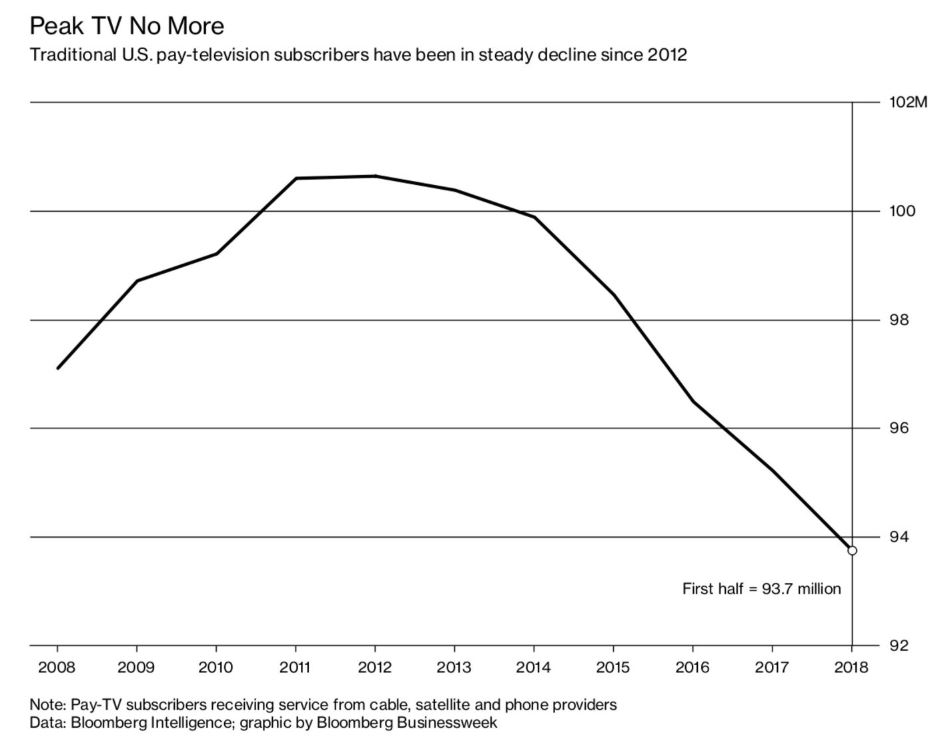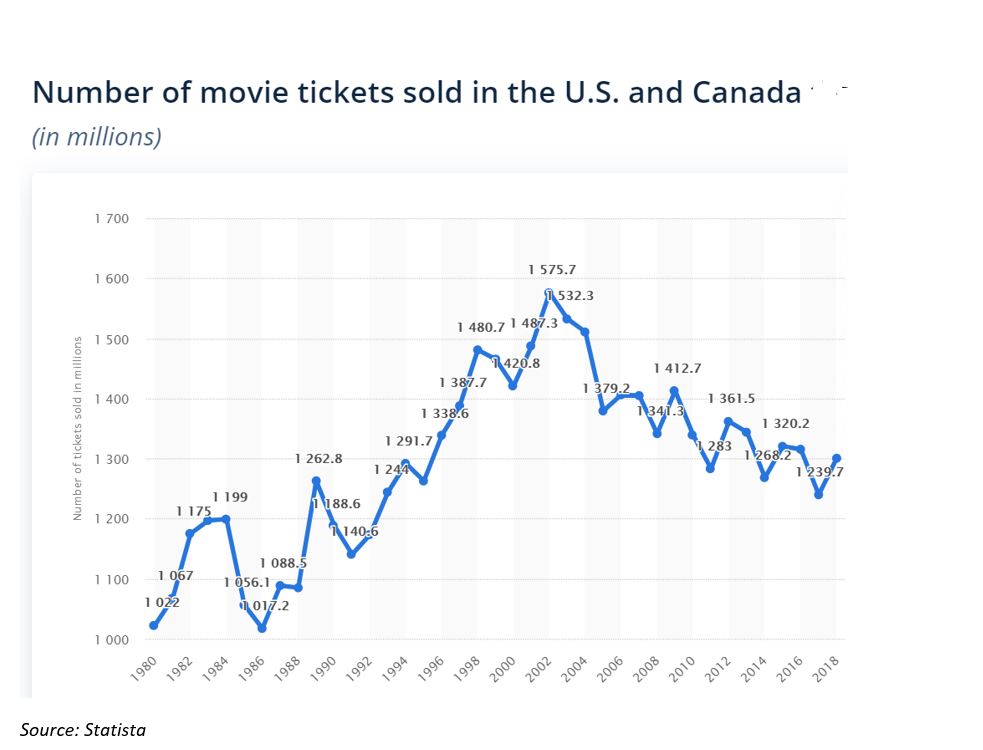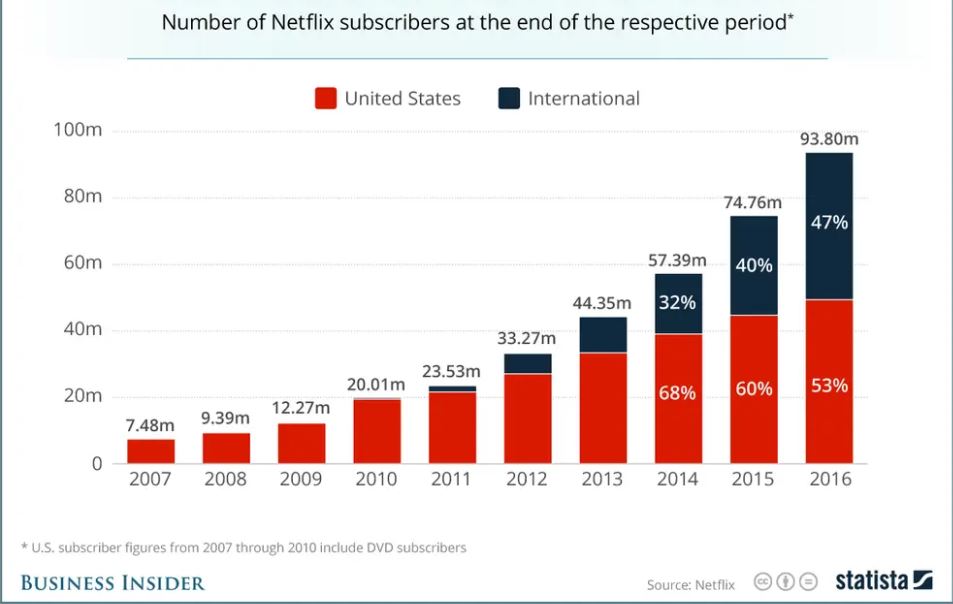Impact to the Disruptees
Watch the video above from Newsweek (2020)
Back in 2017, there had been a significant focus on online streaming services that had caused a major disruption to the television and movie industry. Netflix, specifically, is the first major subscription-based movie and TV streaming service (using the internet) that serves as the on-demand platform that offers an inexpensive alternative to traditional expensive cable TV services anytime and anywhere.
When it started back in August 1997, it did not provide what it is known for today. Launching only its mail-in subscription service, the disruptor only appealed to a few customer groups. According to Christensen (2015), the hallmark of disruption is when a company targets segments of the population that have been overlooked by its competitors, delivering an inferior (but more tailored) alternative, often at a lower price. Eventually, such companies move upmarket while keeping the advantages that it had in the beginning as well as adding the things that mainstream customers want. And without anyone realizing, there is no reason to have cable and DVDs anymore, at least because of this disruptive technology.
Movie Rental Market (DVDs)
One of the most well known American-based providers of home movie and video game rental services is Blockbuster (also known as Blockbuster LLC or Blockbuster Video). Netflix, which started as a DVD by mail service competed with such traditional rentals that it even tried to pitch an idea to Blockbuster, offering to “build their streaming service in exchange for a cash infusion and 49% of the company.” Although this is the case, the founder, Reed Hastings, already had plans for it to become a streaming service long before the idea was economically or technically viable. Returning to the offer, it was refused by the giant rental company which then led them to file for bankruptcy in 2010. Up until today, you could barely hear someone using DVD players; instead the conversation starter that we would always encounter is “what is a good movie or series to watch on Netflix?” The huge shift came with the rising of streaming video. Services like Netflix, Amazon Prime, HBO Now, and the like were able to appeal to DVD rental’s core audience by providing a wider selection of content with an all-you-can-watch, on-demand at low-price while still experiencing high-quality with a highly convenient approach.
Television and Movie Industry
With 4 in every 10 TV households now subscribing to streaming services like Netflix, Amazon, or Hulu, it’s obvious the benefits it offers. Rather than requiring their subscribers to pay a large upfront fee, they keep things simple by offering a low monthly price that’s affordable no matter what one’s income might be. Although streaming services did not have a first window right into any of their programming, they still provide a more convenient alternative to traditional cable TV to many users at a much lower cost.

When Netflix launched its streaming service in 2007, it acquired content produced by different studios, mostly for movies that had already been released in theatres and for TV shows that had either already finished or those that are still being aired but had a large window between their first time air date on network TV. This growth in streaming service is not only disrupting the TV industry, but is also impacting the number of people who choose to go to the traditional cinema. The number of pay TV subscribers has evolved over the past 10 years with the numbers steadily decreasing since 2012 as the number of streaming services subscribers grew in the same time period. Consequently, total admissions (as in number of tickets sold) in movie theatres have been steadily decreasing in the US since the boom of home content consumption alternatives.

The reason behind this shift from pay TV into streaming platforms, mainly Netflix, can be attributed to, as was mentioned before, simply a better user experience, at a better price. Netflix gives the users the ability to consume content at their own pace. When they want and how they want. They can watch through the entire thing at once or in more than one sit in. Additionally, users don’t have to sit through commercials which not only makes for a worse user experience, but also increases the overall amount of time that a user has to sit through to consume a movie or a TV episode. In relation to this, in the long run, video streaming service’s success may lead to the unbundling of cable; cable customers may be allowed to pick and choose channels rather than pay for a whole batch to get what they want.

“The reason why disruptive companies are often able to rise so quickly is that their larger competitors overlook them” (Christensen, 2017). They are not initially competing for the same customers and so the big companies do not see them as a competition. And in the case of Blockbuster, it was not able to overlook their position in the long run that they even refused to acquire Netflix’s offer, making them now an example of a disruptee.
Sources
- Hutton, L. (2017, July 3). Why Netflix Is The Ultimate Digital Disrupter: AIB Official Blog.
- Dysenhaus, M. (2020, February 11). Why Netflix is winning the entertainment battle.
- McAlone, N. (2015, November 18). The father of ‘disruption’ theory explains why Netflix is the perfect example - and Uber isn’t.
- Investopedia. (2020, August 28). How Netflix Is Changing the TV Industry.
- Hoekenga, W. (2017, November 20). Disruption and Chill: Breaking Down the Evolution of the Netflix Brand.